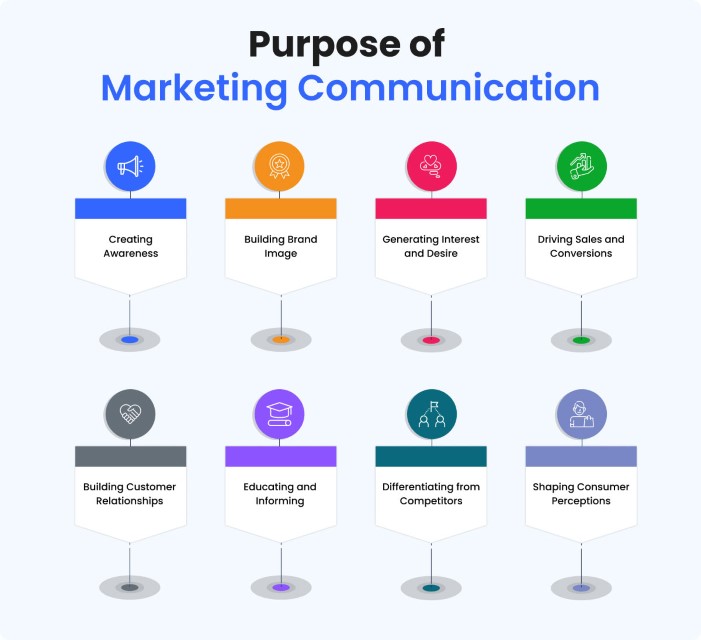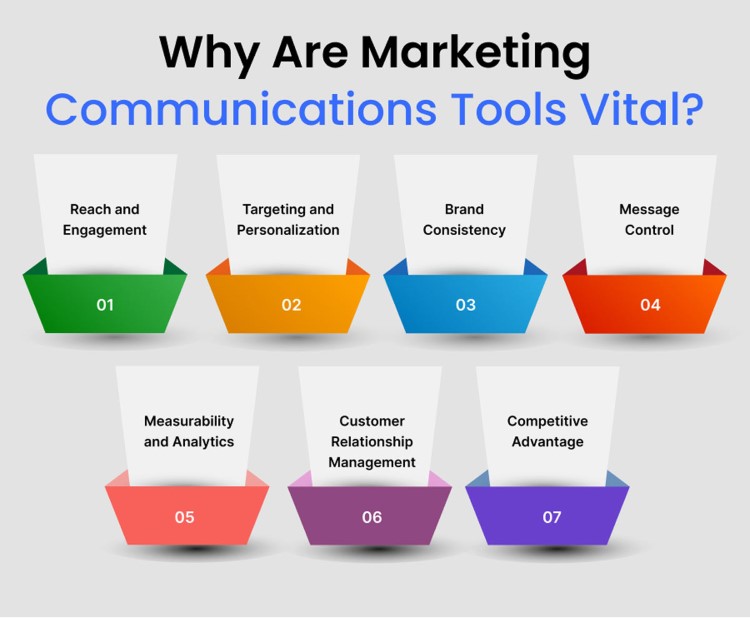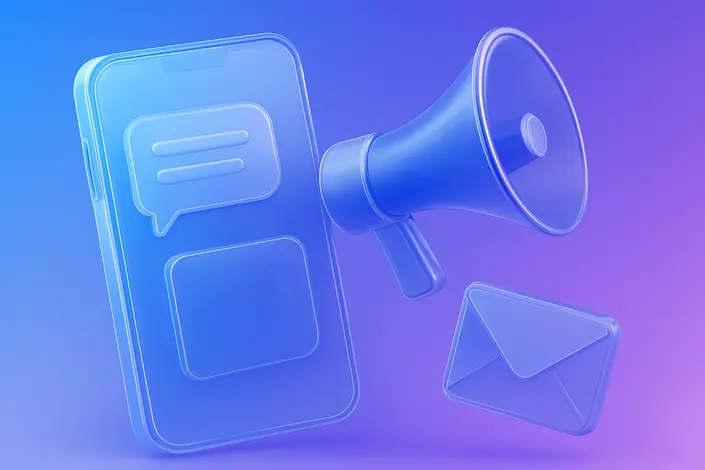13 Effective Marketing Communication Tools (2026)
- June 4, 2023
- 11 mins read
- Listen

Whether you’re a small startup or an established brand, understanding and harnessing the power of marketing communication tools can make all the difference in your growth and profitability.
In this blog post, we’ll embark on an exciting journey through the diverse landscape of marketing communication tools, uncovering their potential to amplify your brand, engage your audience, and skyrocket your success.
So, fasten your seatbelts and get ready to unlock the secrets of these game-changing omnichannel marketing support tools!
What is Marketing Communication?
Marketing communication refers to the strategies and tactics used by companies to convey their messages and promote their products or services to target audiences. It is a subset of marketing that focuses on the communication aspect, aiming to create awareness, generate interest, and ultimately persuade customers to take a desired action.
It involves using various channels and mediums to deliver a consistent and persuasive message to the target audience. These channels can include advertising, public relations, sales promotions, direct marketing, personal selling, digital marketing, social media, content marketing, and more.
The primary goals of marketing communication are:
- Building Brand Awareness: It helps in creating and increasing brand recognition by exposing the target audience to the brand name, logo, tagline, and other visual or auditory elements associated with the brand.
- Informing and Educating: It provides information about the features, benefits, and unique selling propositions of a product or service, helping potential customers understand why they should choose it over competitors.
- Creating Desire and Generating Interest: It aims to generate interest and desire in the minds of consumers, making them want to explore the product or service further.
- Encouraging Action and Purchase: The ultimate objective of marketing communication is to motivate consumers to take a specific action, such as making a purchase, signing up for a newsletter, requesting a demo, or visiting a physical store.
- Building and Maintaining Customer Relationships: It plays a crucial role in nurturing relationships with existing customers by providing relevant information, offering special promotions or loyalty programs, and addressing customer concerns or feedback.
To achieve these goals, marketing communication strategies typically involve market research, target audience segmentation, message development, creative design, media planning, and campaign execution.
The key is to ensure consistent messaging across different channels and touchpoints, creating a cohesive brand image and delivering a compelling experience to the target audience.
Purpose of Marketing Communication
The purpose of marketing communication is to promote a company’s products, services, or brand to its target audience. It involves the strategic use of various communication channels and tactics to convey messages and influence customer behavior.

Here are some specific purposes of marketing communication:
- Creating Awareness: It helps create awareness about a company, its products, or services among potential customers. By effectively communicating the value proposition and unique selling points, it aims to capture the attention of the target audience and make them aware of what the company has to offer.
- Building Brand Image: It plays a vital role in shaping and maintaining a company’s brand image. It helps establish a positive perception of the brand in the minds of consumers by consistently delivering relevant messages, values, and experiences that align with the brand’s positioning.
- Generating Interest and Desire: It aims to generate interest and desire for the company’s offerings. Through persuasive messaging, storytelling, and highlighting the benefits and features of the products or services, it seeks to influence consumer perceptions and create a desire for the offerings.
- Driving Sales and Conversions: Ultimately, marketing communication aims to drive sales and conversions. By effectively communicating the value proposition, addressing customer needs, and providing compelling reasons to purchase, it encourages consumers to take action and make a purchase.
- Building Customer Relationships: It helps build and nurture relationships with customers. Through personalized and targeted communication, such as email marketing, social media interactions, or customer support, it aims to engage customers, establish loyalty, and encourage repeat business.
- Educating and Informing: It is also responsible for educating customers about the company’s products, services, and benefits. It provides information on how the offerings can solve customer problems or fulfill their needs, helping them make informed purchasing decisions.
- Differentiating from Competitors: In a competitive market, marketing communication helps differentiate a company from its competitors. By highlighting unique features, quality, value, or customer benefits, it aims to position the company’s offerings as superior to others in the market.
- Shaping Consumer Perceptions: Through consistent and strategic messaging, marketing communication seeks to shape consumer perceptions about the company and its offerings. It aims to create positive associations, establish credibility, and influence how customers perceive the brand compared to its competitors.
Why Are Marketing Communications Tools Vital?

Marketing communications tools are vital for several reasons:
- Reach and Engagement: It enables businesses to reach and engage with their target audience effectively. Whether it’s through traditional channels like television, radio, or print media, or digital platforms like social media, websites, email marketing, or content marketing. These tools provide a means to connect with customers on a large scale and capture their attention.
- Targeting and Personalization: It allows businesses to target specific segments of their audience based on demographics, interests, behavior, or other criteria. This targeting helps deliver personalized messages and offers that resonate with individual customers, increasing the likelihood of engagement and conversion.
- Brand Consistency: It plays a crucial role in maintaining brand consistency across various channels. By using consistent visual elements, messaging, and tone of voice, businesses can reinforce their brand identity and create a cohesive brand experience for customers, regardless of the communication platform.
- Message Control: With marketing communication tools, businesses have control over the messages they convey to their audience. They can carefully craft their marketing messages to highlight their unique selling propositions, address customer pain points, and effectively communicate the benefits of their products or services.
- Measurability and Analytics: Many marketing communication tools offer measurement and analytics capabilities. This allows businesses to track the performance of their marketing campaigns, gather data on customer responses and behaviors, and gain insights into the effectiveness of their communication strategies. These insights can inform future marketing decisions and help optimize campaigns for better results.
- Customer Relationship Management: It often integrates with customer relationship management (CRM) systems, allowing businesses to manage and track customer interactions and nurture relationships effectively. They can use these tools to automate workflows, personalize customer interactions, and provide timely and relevant information to customers at different stages of their journey.
- Competitive Advantage: Utilizing effective marketing communication tools can provide a competitive advantage in the market. Businesses that leverage the right tools and channels to reach their target audience with compelling messages can differentiate themselves from competitors and attract and retain customers more effectively.
13 Marketing Communication Tools

1. Advertising
It is a paid form of marketing communication that aims to promote a product, service, or brand through various media channels such as television, radio, print, outdoor billboards, online banners, and social media.
Key Points:
- Broad reach and exposure to a large audience.
- Allows businesses to create visually appealing and persuasive messages.
- Can target specific demographics or consumer segments.
- Enhances brand awareness and visibility.
- Requires a budget allocation for media placement and creative development.
2. Sales Promotion
It involves short-term incentives and tactics to stimulate immediate purchases or encourage customer loyalty. Examples include discounts, coupons, contests, giveaways, loyalty programs, and point-of-sale displays.
Key Points:
- Aimed at boosting sales and generating immediate customer response.
- Encourages customers to take action by offering incentives or added value.
- Creates a sense of urgency or exclusivity.
- Supports product launches, clearance sales, or seasonal promotions.
- Limited duration and often used in conjunction with advertising.
3. Direct Marketing
It involves communicating with customers directly, often on a one-to-one basis, to promote products or services. It includes direct mail, telemarketing, catalog distribution, and targeted digital marketing efforts.
Key Points:
- Targets specific individuals or segments with personalized messages.
- Allows for direct response and immediate feedback.
- Can be highly targeted and cost-effective.
- Enables tracking and measurement of campaign performance.
- Requires careful management of customer data and privacy considerations.
4. Email Campaigns
Email campaigns involve sending targeted promotional messages or newsletters directly to individuals’ email addresses.
It is a form of direct marketing using the email channel.
Key Points:
- A cost-effective and efficient way to reach a large audience.
- Enables personalization and segmentation based on customer data.
- Can be automated for timed or triggered messages.
- Supports lead generation, customer retention, and sales conversion.
- Requires compliance with email marketing regulations and opt-in permissions.
5. Newsletter
Newsletters are regular publications distributed to subscribers, typically via email, providing updates, information, and engaging content related to a company, its products, or its industry.
Key Points:
- Builds relationships with customers and stakeholders.
- Provides valuable content, insights, and industry news.
- Keeps subscribers informed and engaged.
- Strengthens brand authority and loyalty.
- Supports lead nurturing and customer retention efforts.
6. Personal Selling
It involves one-on-one interactions between sales representatives and potential customers. It is a face-to-face or virtual communication method used to educate, persuade, and close sales.
Key Points:
- Enables personalized communication and relationship building.
- Tailors message specific customer needs and objections.
- Facilitates immediate feedback and clarification.
- Often used in high-value or complex sales situations.
- Requires trained sales professionals and ongoing training.
7. Public Relations
It focuses on managing a company’s reputation and maintaining positive relationships with the public, media, and other stakeholders. It involves activities such as press releases, media relations, events, crisis management, and community engagement.
Key Points:
- Enhances brand reputation and credibility.
- Generates positive media coverage and publicity.
- Manages company image and perceptions.
- Builds relationships with media and influencers.
- Plays a role in crisis communication and damage control.
8. Social Media
Social media platforms such as Facebook, Instagram, Twitter, LinkedIn, and YouTube provide avenues for businesses to engage with their target audience, share content, and promote their products or services.
Key Points:
- Enables direct communication and engagement with customers.
- Supports building brand awareness and loyalty.
- Allows for targeted advertising and audience segmentation.
- Facilitates viral marketing and word-of-mouth promotion.
- Requires consistent content creation and active community management.
9. Catalogs
These are printed or digital publications that showcase a company’s products or services in a visually appealing and organized format. They provide detailed product information and can be distributed through mail, in-store displays, or online platforms.
Key Points:
- Showcases a wide range of products or services.
- Enables customers to browse and compare offerings.
- Can be used for direct sales or lead generation.
- Supports cross-selling and upselling opportunities.
- Requires effective design and compelling product presentation.
10. Trade Shows
These are events where companies from a specific industry showcase their products, services, and innovations to industry professionals and potential customers.
Key Points:
- Offers opportunities for face-to-face interactions with prospects.
- Showcases products in a physical, experiential environment.
- Builds brand visibility and industry presence.
- Facilitates networking and partnership opportunities.
- Requires careful planning, booth design, and staffing.
11. Webinars
These are online seminars or presentations that allow businesses to educate, inform, or train their target audience through live or recorded sessions.
Key Points:
- Enables remote audience engagement and participation.
- Provides educational or thought leadership content.
- Can be used for product demonstrations or training.
- Generates leads through registration and follow-up.
- Requires quality content, interactive features, and promotion.
12. Mobile Apps
Mobile apps are software applications specifically designed for use on mobile devices such as smartphones or tablets. They provide functionality, information, or entertainment and can be used by businesses to engage and serve customers.
Key Points:
- Offers convenience and accessibility for users.
- Supports personalized experiences and targeted messaging.
- Facilitates mobile commerce and in-app purchases.
- Enhances brand loyalty and customer retention.
- Requires development, maintenance, and regular updates.
13. Sponsorship
It involves supporting events, organizations, or initiatives financially or through other resources in exchange for brand visibility and association.
Key Points:
- Enhances brand exposure and reaches target audiences.
- Builds positive brand associations and goodwill.
- Supports corporate social responsibility efforts.
- Provides opportunities for activation and engagement.
- Requires careful selection of sponsorships aligned with the target market and brand values.
Summary
By leveraging the right mix of marketing tools, with AI chatbots you can build brand awareness, foster customer loyalty, offer great customer service and drive tangible results. So, embrace the power of these tools, experiment with creativity, and unleash the full potential of your marketing campaigns.
Get ready to elevate your brand to new heights and leave a lasting impact in the minds of your audience. The world is waiting for your message – go forth and conquer!
Frequently Asked Questions
AI-driven tools offer automation so that businesses can automate many of their internal operations, personalization, and data analysis. Chatbots for instant customer service and automated email responses enhance overall customer engagement and conversion rates.
While choosing the right marketing tools for your business, you need to keep in mind some of the key considerations like target audience preferences, your business objectives, budget and scalability, integration with existing tools, analytics, and performance tracking features.
Omnichannel marketing ensures a seamless customer experience across multiple communication touchpoints (email, social media, website, in-store, live chat etc), increasing customer satisfaction and brand loyalty.
Since all communication touchpoints are connected, customers can easily continue their interactions without repeating themselves. Meanwhile, customer service representatives can manage all conversations from a single platform.
To measure the effectiveness of marketing communication tools some key metrics include engagement rates, conversion rates, customer feedback, customer satisfaction scores and Return on Investment (ROI).
Some of the upcoming trends in marketing communication tools include: AI-powered personalization, video-based marketing, voice search, conversational marketing, and automated predictive analytics.




